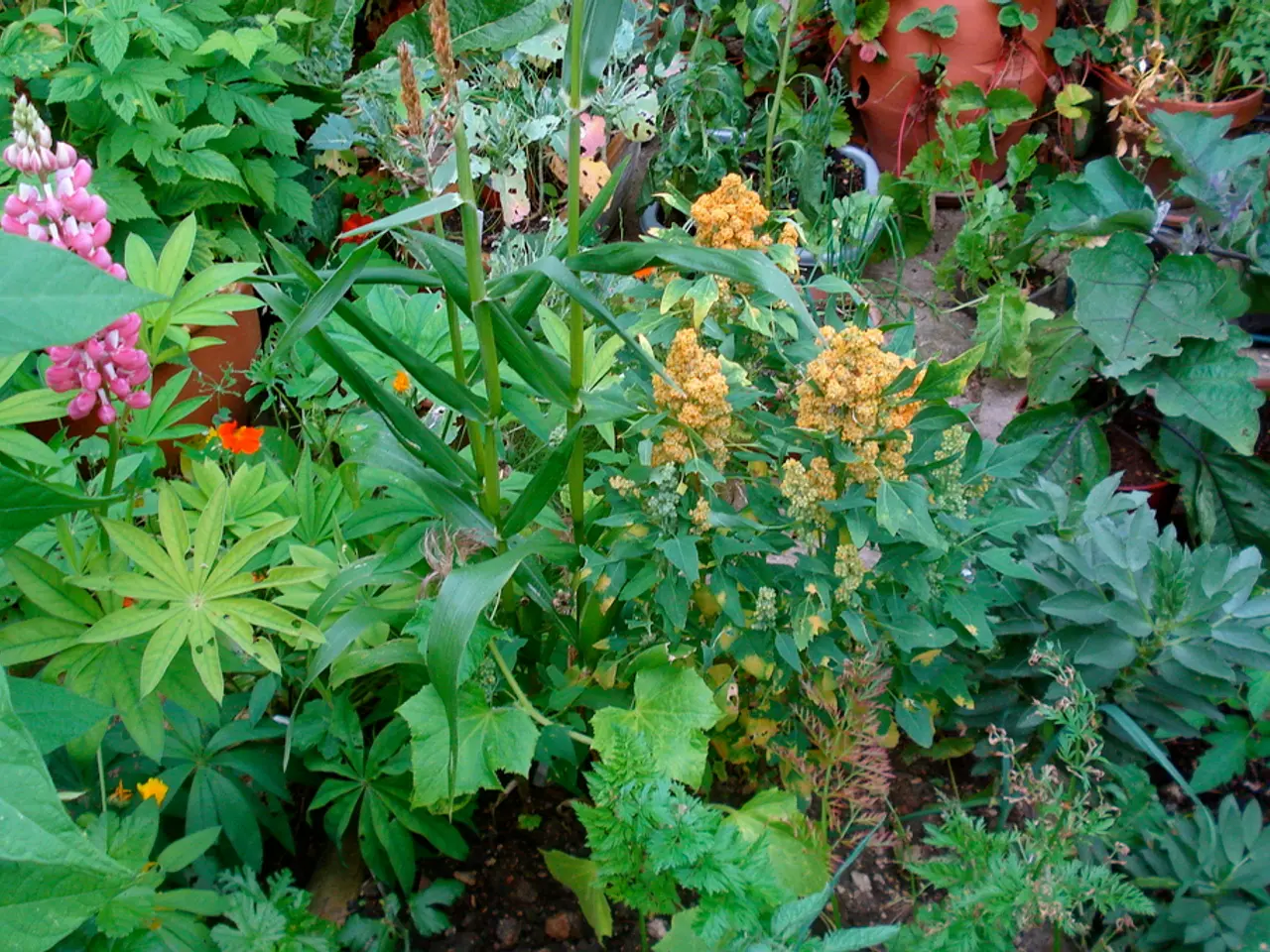Advantages of Manual Elimination of Weeds in Horticulture
Manual Weed Control in Organic Gardening: A Sustainable Approach to Healthier Plants and a Thriving Environment
In the heart of an organic garden, a dedicated gardener is embracing a simple yet effective method for maintaining a flourishing ecosystem – manual weed control. This approach, which eschews harmful chemicals and pesticides, offers numerous benefits for plant health, the environment, and the gardener themselves.
Manual methods such as hand-pulling and mechanical removal have proven to be a boon for the garden. By reducing competition for nutrients, water, and sunlight, manual weed control improves crop yield and plant vigor. This targeted approach allows the gardener to closely observe the health of their plants, identifying those that need extra care.
Moreover, manual weed control preserves soil health and biodiversity. Unlike chemical herbicides, manual methods do not introduce harmful substances that could disrupt the delicate balance of beneficial soil organisms. This maintenance of natural resilience in the ecosystem promotes a healthier, more sustainable garden.
Manual methods also help prevent habitat for pests and diseases. By removing weeds without disrupting native plants and beneficial insects, the gardener ensures a balanced and thriving ecosystem.
When combined with other organic practices like mulching, crop rotation, or cover cropping, manual control contributes to natural weed suppression and overall sustainable farming. This holistic approach ensures a garden that is not only productive but also environmentally friendly.
Weekly weed checks, a small time investment, lead to a thriving garden. By pulling weeds out by their roots, the gardener prevents their return, reducing the need for repeated interventions and limiting environmental disturbance. This mindful activity, often described as peaceful gardening, is also preferred for safety, as it eliminates the use of chemicals that could potentially harm children, pets, and edible plants.
The results are evident: since adopting manual weed control, the gardener's plants appear happier and grow stronger. Larger and stronger vegetables, brighter and fuller flowers, and a noticeable improvement in overall garden health are all testaments to the effectiveness of this method.
In embracing manual weed control, the gardener is not only enhancing plant health but also contributing positively to the environment. By improving soil health, reducing pests, supporting biodiversity, and avoiding harmful chemicals, this approach aligns closely with the principles of organic gardening. It ensures a sustainable garden that is not only productive but also environmentally friendly, a testament to the power of a simple, yet effective, approach to gardening.
When focusing on the garden's health and preserving a thriving ecosystem, the gardener introduces manual weed control methods such as hand-pulling and mechanical removal for improved plant vigor, avoided disruption of soil health, and maintained biodiversity, which in turn supports a balanced and environmentally-friendly home-and-garden lifestyle. Furthermore, embracing organic gardening practices like mulching, crop rotation, cover cropping, and weekly weed checks with manual control not only promotes a sustainable living space but also enhances the vividness and size of fruits and vegetables, creating a picturesque home-and-garden that mirrors the commitment to healthier plants, a thriving environment, and an overall lifestyle in harmony with nature.





